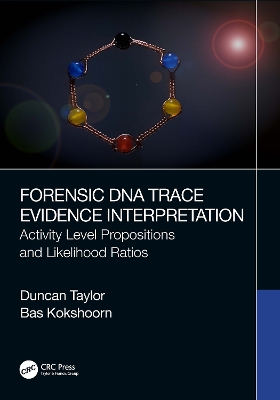Forensic DNA Trace Evidence Interpretation: Activity Level Propositions and Likelihood Ratios provides all foundational information required for a reader to understand the practice of evaluating forensic biology evidence given activity level propositions, and to implement the practice into active casework within a forensic institution. The book begins by explaining basic concepts and foundational theory, pulling together research and studies that have accumulated in forensic journal literature over the last 20 years.
The book explains the laws of probability, showing how they can used to derive, from first principles, the likelihood ratio, used throughout the book to express the strength of evidence for any evaluation. Concepts such as the hierarchy of propositions, the difference between experts working in an investigative or evaluative mode, and the practice of case assessment and interpretation are explained to provide the reader a broad grounding in the topics that are important to understanding evaluation of evidence. Activity level evaluations are discussed in relation to biological material transferred from one object to another, the ability for biological material to persist on an item for a period of time or through an event, the ability to recover the biological material from the object when sampled for forensic testing, and the expectations of the prevalence of biological material on objects in our environment. These concepts of transfer, persistence, prevalence, and recovery are discussed in detail in addition to the factors that affect each of them.
The authors go on to explain the evaluation process: how to structure case information and how to formulate propositions. This includes how a likelihood ratio formula can be derived to evaluate the forensic findings, introducing Bayesian Networks and explaining what they represent and how they can be used in evaluations, and showing how evaluation can be tested for robustness. Using these tools, the authors also demonstrate the ways that the methods used in activity level evaluations are applied to questions about body fluids. There are also chapters dedicated to reporting of results and implementation of activity level evaluation in a working forensic laboratory. Throughout the book four cases are used as examples to demonstrate how to relate the theory to practice and detail how laboratories can integrate and implement activity level evaluation into their active casework.
- ISBN13 9781000801385
- Publish Date 1 December 2022
- Publish Status Forthcoming
- Publish Country GB
- Publisher Taylor & Francis Ltd
- Imprint CRC Press
- Format eBook
- Language English
